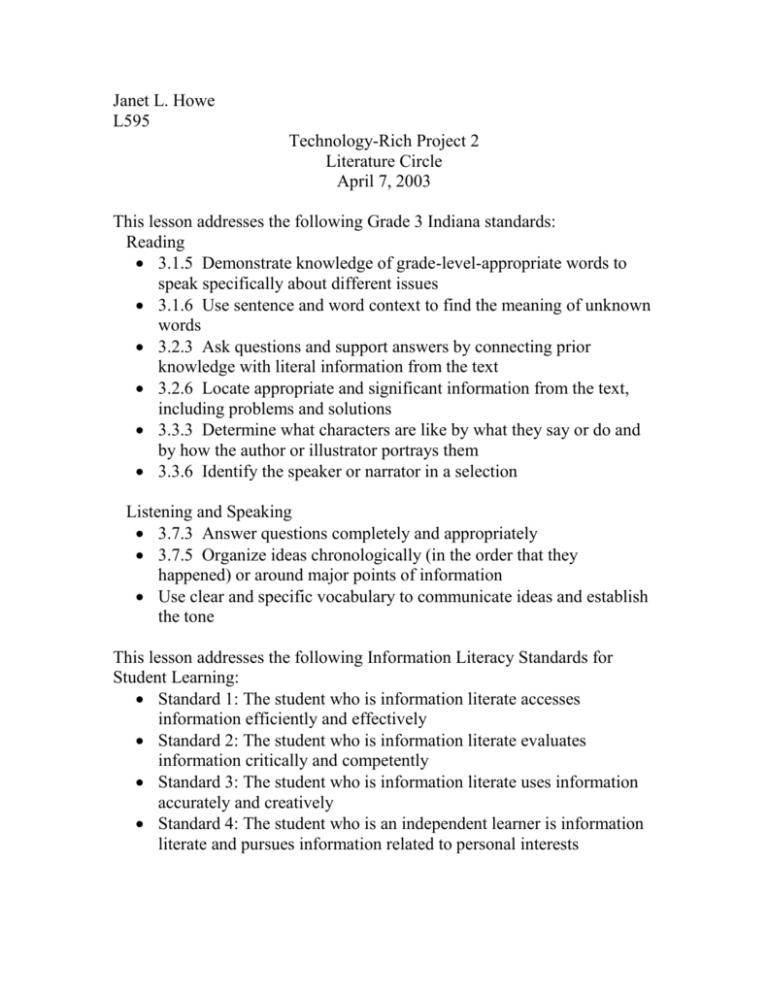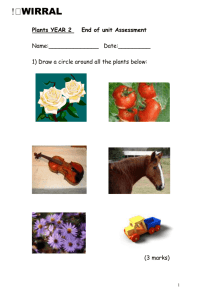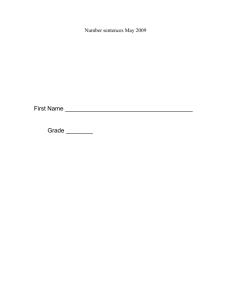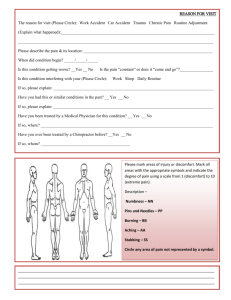Technology-rich Literature Circle
advertisement

Janet L. Howe L595 Technology-Rich Project 2 Literature Circle April 7, 2003 This lesson addresses the following Grade 3 Indiana standards: Reading 3.1.5 Demonstrate knowledge of grade-level-appropriate words to speak specifically about different issues 3.1.6 Use sentence and word context to find the meaning of unknown words 3.2.3 Ask questions and support answers by connecting prior knowledge with literal information from the text 3.2.6 Locate appropriate and significant information from the text, including problems and solutions 3.3.3 Determine what characters are like by what they say or do and by how the author or illustrator portrays them 3.3.6 Identify the speaker or narrator in a selection Listening and Speaking 3.7.3 Answer questions completely and appropriately 3.7.5 Organize ideas chronologically (in the order that they happened) or around major points of information Use clear and specific vocabulary to communicate ideas and establish the tone This lesson addresses the following Information Literacy Standards for Student Learning: Standard 1: The student who is information literate accesses information efficiently and effectively Standard 2: The student who is information literate evaluates information critically and competently Standard 3: The student who is information literate uses information accurately and creatively Standard 4: The student who is an independent learner is information literate and pursues information related to personal interests Standard 5: The student who is an independent learner is information literate and appreciates literature and other creative expressions of information Standard 9: The student who contributes positively to the learning community and to society is information literate and participates effectively in groups to pursue and generate information I developed this literature circle plan to use with Grade 3 students and to incorporate the above standards. Students will choose to read one of the following three books: Earthquake Terror by Peg Kehret After Jonathan’s mother breaks her ankle, twelve-year old Jonathan Palmer and his six-year old sister, Abby, are left alone on a deserted island where his family had been camping. While his parents are gone seeking medical help, a devastating earthquake hits. Jonathan and Abby are faced with fighting for their lives. It is up to Jonathan to keep Abby, who is partially paralyzed, safe until help arrives. Night of the Twisters by Ivy Ruckman This fictional story tells of Dan Hatch and his friends surviving terrible tornadoes that hit Nebraska. Dan’s neighborhood is devastated by the storms and Dan must protect his younger brother and friends. Titanic Crossing by Barbara Williams Thirteen-year old Albert Trask is going home to America on the Titanic. He is traveling with his widowed mother and his younger sister, Ginny. Albert is free to explore the huge ship until an iceberg hits it. Then it is up to Albert to save his sister and protect her in the terrible days and months that followed. Each student will read one of the books. Groups will be determined by student choice of books. After each assigned reading, students will participate in Literature Circle groups. (Of course, the Literature Circle roles will have been taught and modeled by the teacher previously.) There are five different roles. All students will have the opportunity to complete each role. The roles and activities are: 1. Discussion Director—This job is to develop a list of questions that the group might want to discuss about the book. The questions are to be thought provoking and cannot just be answered with one word. Inference questions beginning with the words why, how, and if, should be used. 2. Connector—This job is to find connections between the book and the world. Students may connect the reading to events happening in their own life at school or in the neighborhood. They may also connect the reading to other books or stories, similar events, or other people or problems. 3. Word Finder—This job is to find a few new words in the readings. Students use sticky notes to bookmark the words. Students then discuss how the word fits in the story, what the word means, and what the words makes them feel like. Students may also draw the word. (Students may only use a dictionary as a last resort.) 4. Passage Picker—This job is to find a few special sections of the reading that the group should look back on and read. These can be a good part, a funny part, a scary part, an interesting part, some good writing, or a good description. Students bookmark these passages with sticky notes and then share with the group during the literature circle. 5. Artful Artist—This job is to draw some kind of picture related to the reading. This drawing may include a character, the setting, a problem, an exciting part, a surprise, or a prediction of what will happen next. Students will use the Literature Circle Jobs sheets (attached) to prepare for their literature circle. The actual literature circles will take place during class time. The teacher will use the student organizational grid (attached) to assign the literature circle jobs to make sure all students complete each of the activities. Part 1 Introduction Teacher introduces overall theme of disasters. Include book talks of the three books— Earthquake Terror by Peg Kehret Night of the Twisters by Ivy Ruckman Titanic Crossing by Barbara Williams Show students the book review sites below: http://www.worldreading.org/submit.phtml This site has book reviews written by children. Students may also submit their own book reviews free. http://www.spaghettibookclub.com This website has book reviews written by children. Student book reviews may be submitted for a charge. As students read book reviews, tell them a requirement of this unit is that they will write their own book review. As they look, they should note how the reviews are written. Show them that the complete plot is not revealed to the reader. Provide time for students to peruse books and sign up for individual choice. After student choices are made, allow time for the children to use the internet to look at the following websites which provide background information. (To save time, bookmark these as favorites before class time.) Have students work together in literature circle groups to find seven facts about their disaster. Earthquakes: http://library.thinkquest.org/10136/ Earthquake disasters are explained here. Discussion also includes the causes, measurements, predictions, and warnings. http://library.thinkquest.org/J003341/naturaldisaste/earthqua.htm Pictures of earthquake destruction are shown on this site. Safety tips are also discussed. Tornadoes: http://library.thinkquest.org/10136/ Tornadoes are explained on this website. The site discusses the definition of a tornado, where and when a tornado can occur, and major tornado disasters. http://library.thinkquest.org/J003341/naturaldisaste/tornado.htm This is a great site that shows actual pictures of tornadoes, as well as causes and safety tips. Titanic Disaster: http://search.eb.com/titanic/01_01.html This website from Encyclopedia Britannica introduces the exhibit (see below) and gives background information about the Titanic disaster. http://search.eb.com/titanic/01_PORT/pict_01.html An excellent website with pictures showing the ship, passengers, and newspaper accounts following the tragedy. Assign reading and first Literature Circle job to be completed for the next class period. Part 2 For the next five lessons, assign the required reading and Literature Circle jobs. During class time the students will participate in their own group Literature Circle. The teacher walks from group to group jotting down notes on students’ progress. Teacher does not instruct during the Literature Circle. If the teacher is needed, (only if the group is not working together or if the group has a question about procedure), the Discussion Director is the only student who may find the teacher and ask for help. Keep in mind the teacher has spent much time previous to Literature Circle groups to teach each individual job and each role. Therefore, the students should be able to proceed on their own. Part 3 After the last Literature Circle group, instruct the students to write a review of their individual book. They may use a word processing program such as Microsoft Word. An illustration must accompany the review. Encourage the students to share these with their peers.







